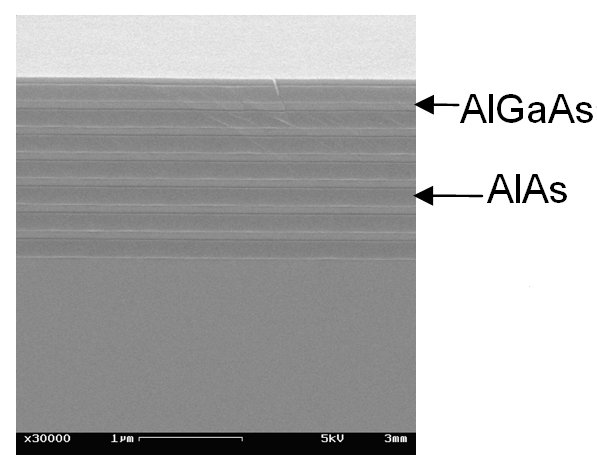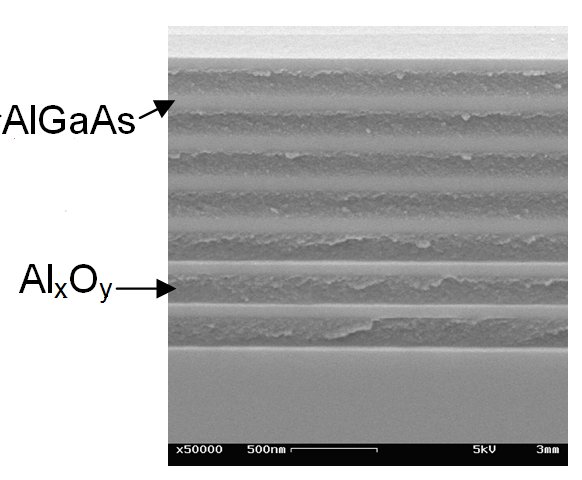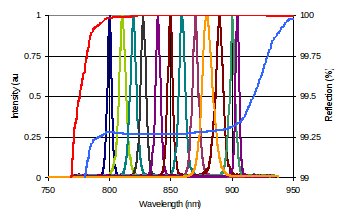Components for Ultra-Short Pulse Laser Systems

Figure 1) Scanning electron microscope images showing the as-grown oxidizable SBR with unoxidized AlAs layers.

Figure 2) Scanning electron microscope images showing the SBR with AlxOy layers.

Figure 3) Example spectra from the Cr3+:LiSAF laser, showing the tunability of the central wavelength of the laser from 800 nm to 905 nm, for the average ~140-fs pulses. The calculated small signal and saturated reflectivities of the SBR are also shown.
In this work, saturable Bragg reflectors (SBRs) have been grown via molecular beam epitaxy to work in lasers that operate at a center wavelength of 800nm, 850nm, 910nm and 1550nm. In most instances, the highly reflective dielectric mirror stack consists of a series of alternating layers of high index AlxGa1-x layers where x<0.2 and low index Al0.95Ga0.05As layers. For SBRs with the largest reflectivity bandwidth, the dielectric mirror stack contains AlxOy as the low index material. In these oxide-containing SBRs, the AlxOy is formed by the thermal oxidation of the as-grown AlAs layers. Figure 1 shows an as-grown SBR structure prior to the thermal oxidation of AlAs and the final SBR structure with the AlxOy low index layers within the dielectric mirror stack. Using the AlxOy based SBRs (with a 6nm thick strained InGaAs quantum well as the saturable absorber) in a diode-pumped Cr3+:LiSAF laser, the central wavelength of the resultant optical pulses was continuously tuned from 800 nm to 905 nm by the rotation of a specially designed birefringent plate. Within the laser's tuning range, the pulse widths varied from 70-fs to 254-fs, with an average pulse width of 139-fs. Figure 2 shows the optical spectrum of the optical pulses within the tuning range of the Cr:LiSAF laser along with the calculated reflectivity of the SBR. The oxidation process is currently being optimized to increase the usable size of the SBRs as well as to reduce the non-saturable losses, which currently limits its use within the Cr3+:LiSAF laser.
Currently, we have demonstrated devices with center wavelengths ranging from 800-1550nm, we are also fabricating SBRs for lasers operating at wavelengths of 2-3 microns. Narrowband (60nm) mirrors, as well as broadband (300-500nm) mirrors (with small-area oxidized mesas) have been fabricated. As a next step, we will develop broadband SBRs with larger area (>500 microns) and also extend the oxidized mirror approach to the whole operating wavelength (800-3000nm) regime.
